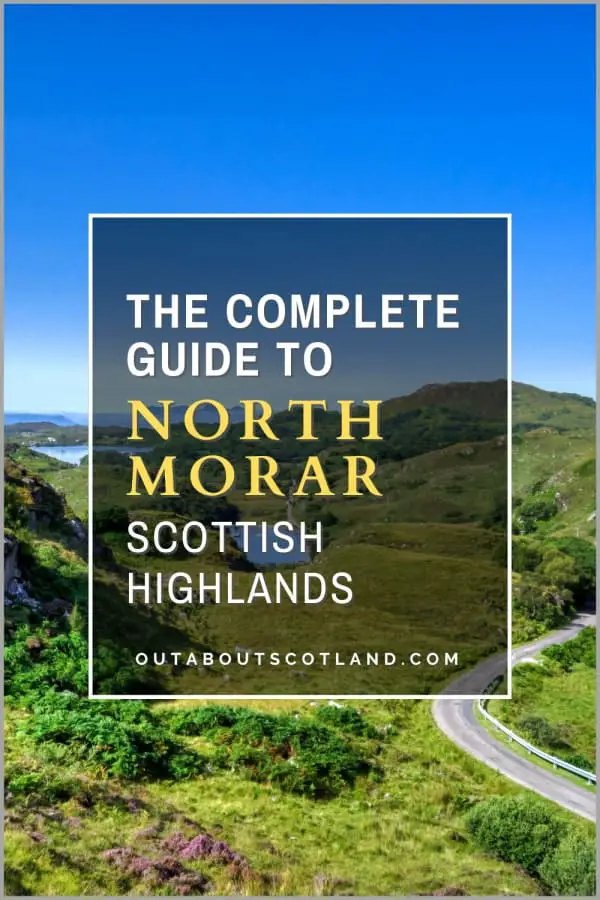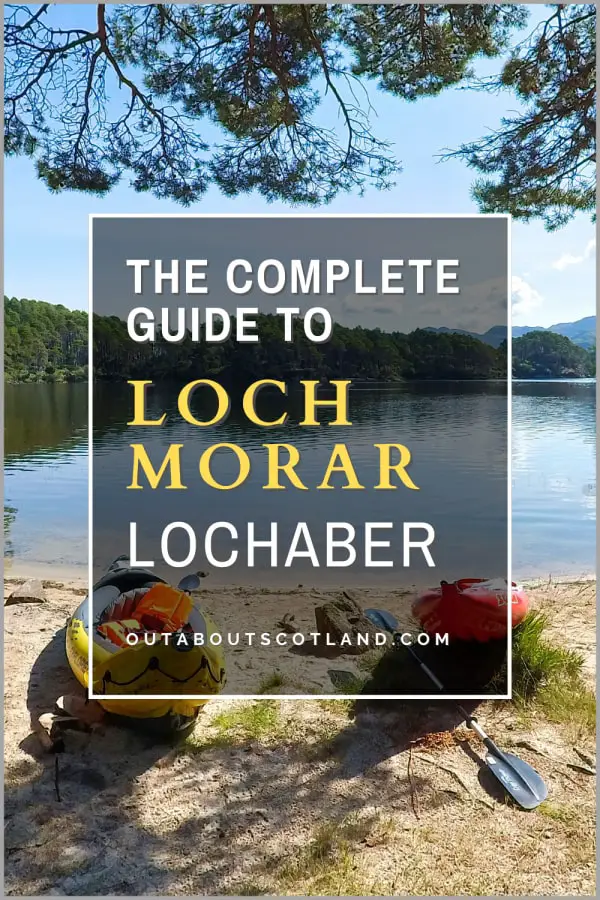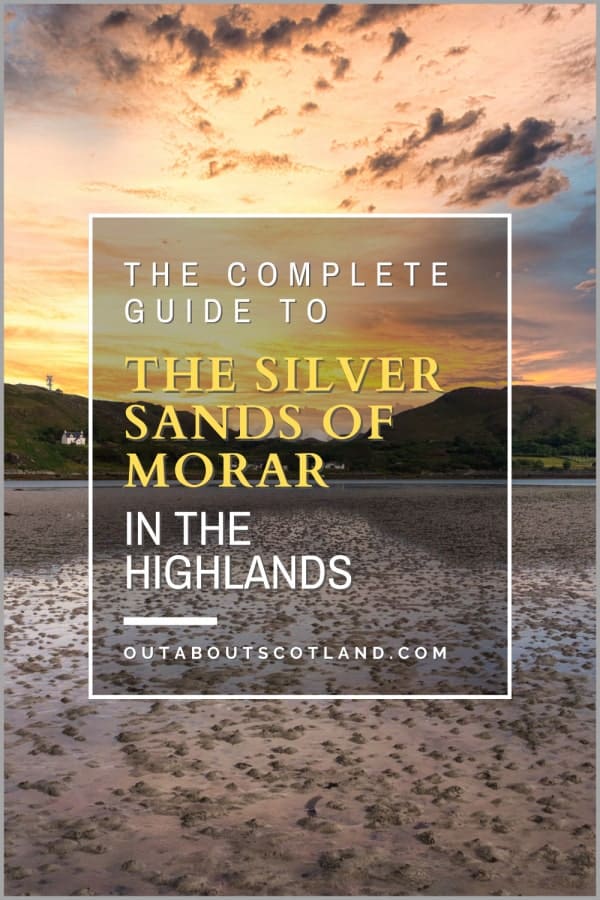Loch Morar is a freshwater loch in the Lochaber region of the Scottish Highlands. The loch is the fifth-largest in Scotland and is the deepest body of fresh water in the United Kingdom, with some areas plummeting to an incredible 310 metres. As well as being a popular location for water sports, Loch Morar offers visitors a number of superb lochside walking trails and several secluded beaches.
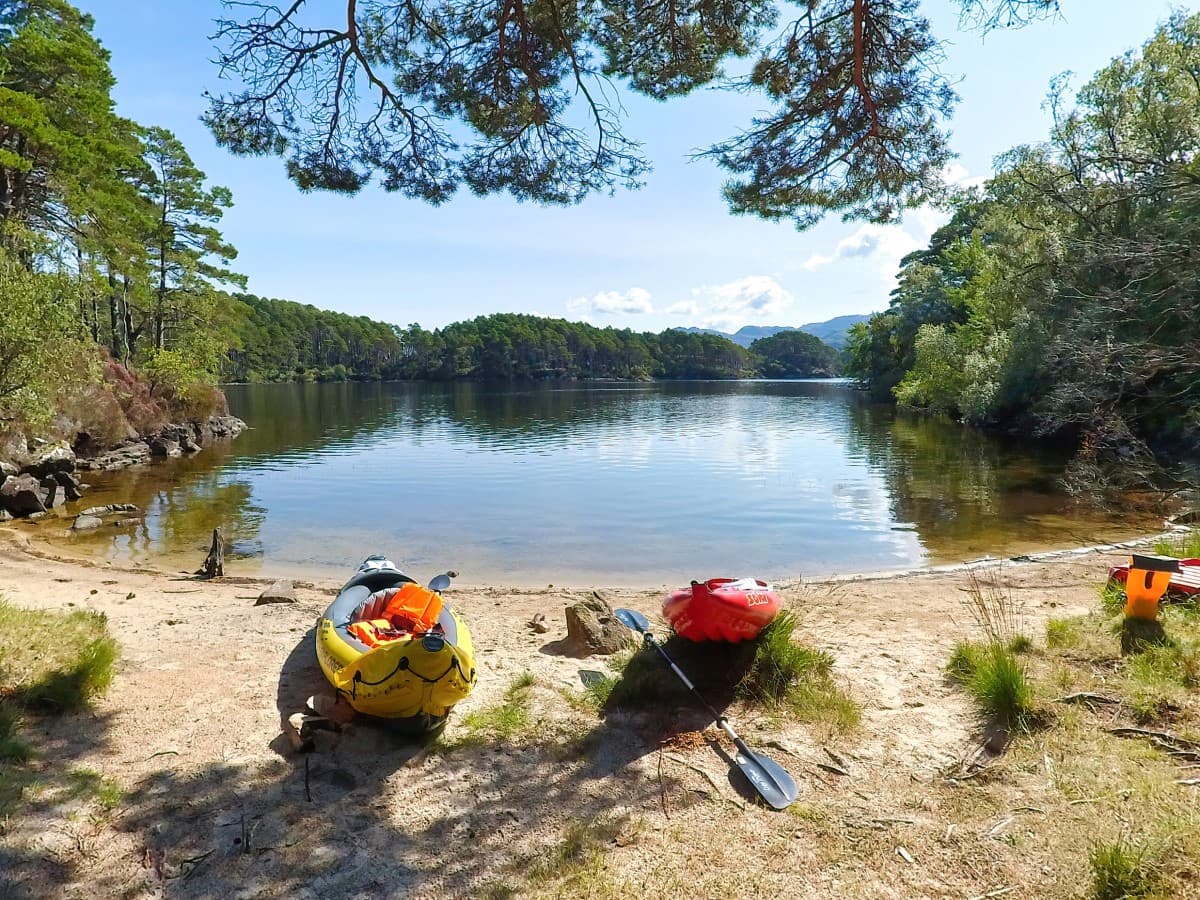
| Address: | Morar, PH40 4PB |
| Opening Hours: | 24/7 |
| Admission Price: | Free |
| Parking: | Free parking spaces on the side of the road. |
| Contact: | N/A |
| Facilities: | Facilities in Killin village (shop, cafe, restaurant with toilets). |
| Photos: | Virtual Tour YouTube Video |
Overview
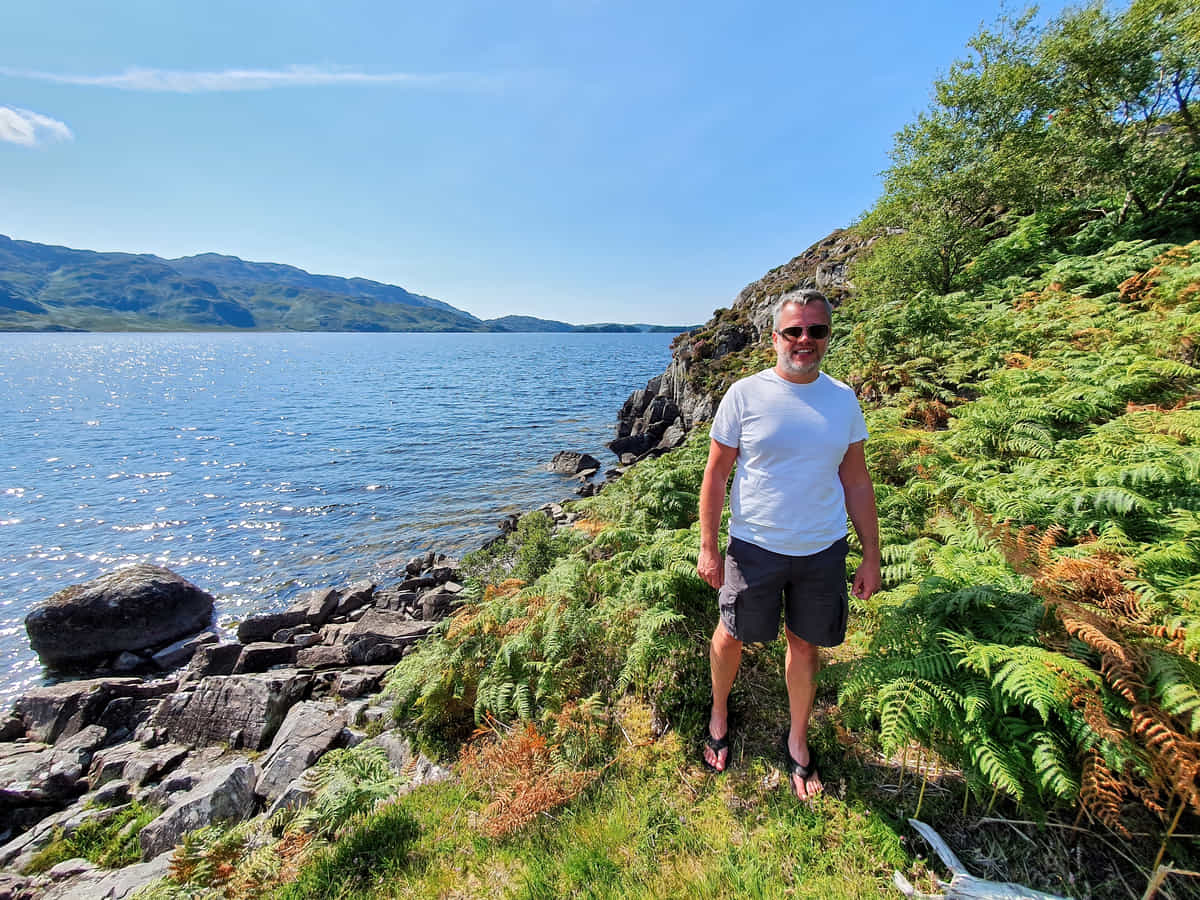
The deepest freshwater body in the British Isles is Loch Morar, a stunning natural wonder with 11 miles of crystal-clear waters bordered by rocky mountains and lush forests. It’s famous for its unspoiled beauty, abundant wildlife, and the legendary Morag, Scotland’s lesser-known cousin of the Loch Ness Monster.
There are two main reasons to visit this particular region of Scotland, the first of which is the ever-popular Jacobite ‘Harry Potter’ steam train which puffs its way from Fort William to Mallaig on what has been described as one of the world’s greatest train journeys.
The second reason is the ferry service that runs from Mallaig to the Isle of Skye – a popular travel option that combines stunning views with a visit to Scotland’s most famous west coast island. While the train ride and the sail to Skye are undeniably enjoyable, they completely bypass one more reason to visit the Morar peninsula, which is to experience the spectacular scenery of Loch Morar.
Loch Morar lies to the immediate east of the village of Morar and south of Mallaig and Loch Nevis in the Lochaber region of the Scottish Highlands.
The loch is best known for being the deepest body of fresh water in the United Kingdom (and the third deepest in Europe), with some parts plummeting to an incredible 310 metres. It’s also known as the home of Morag, a mythical monster and cousin to Nessie who has had far fewer sightings and is therefore even more mysterious.
Due to its low-lying shoreline and the towering hills that surround it on its northern, eastern, and southern sides, Loch Morar is a haven for walkers. Possibilities for hill and lochside walks are almost endless, but there are three main waymarked trails – Glasnacardoch to Lochs Nostarie and Eireagoraidh, Bracorina to Tarbet, and Allt an Loin to Loch a Bhada Dharaich.
All three offer stunning views at every step of the way, but they really come into their own once you leave the shoreline and start climbing. The photogenic views from the top of the hills surrounding Loch Morar will leave you breathless, and on a clear day, you can see as far as the Small Isles of Eigg and Rum, the Cuillin mountains on Skye, and Ben Nevis to the southeast.
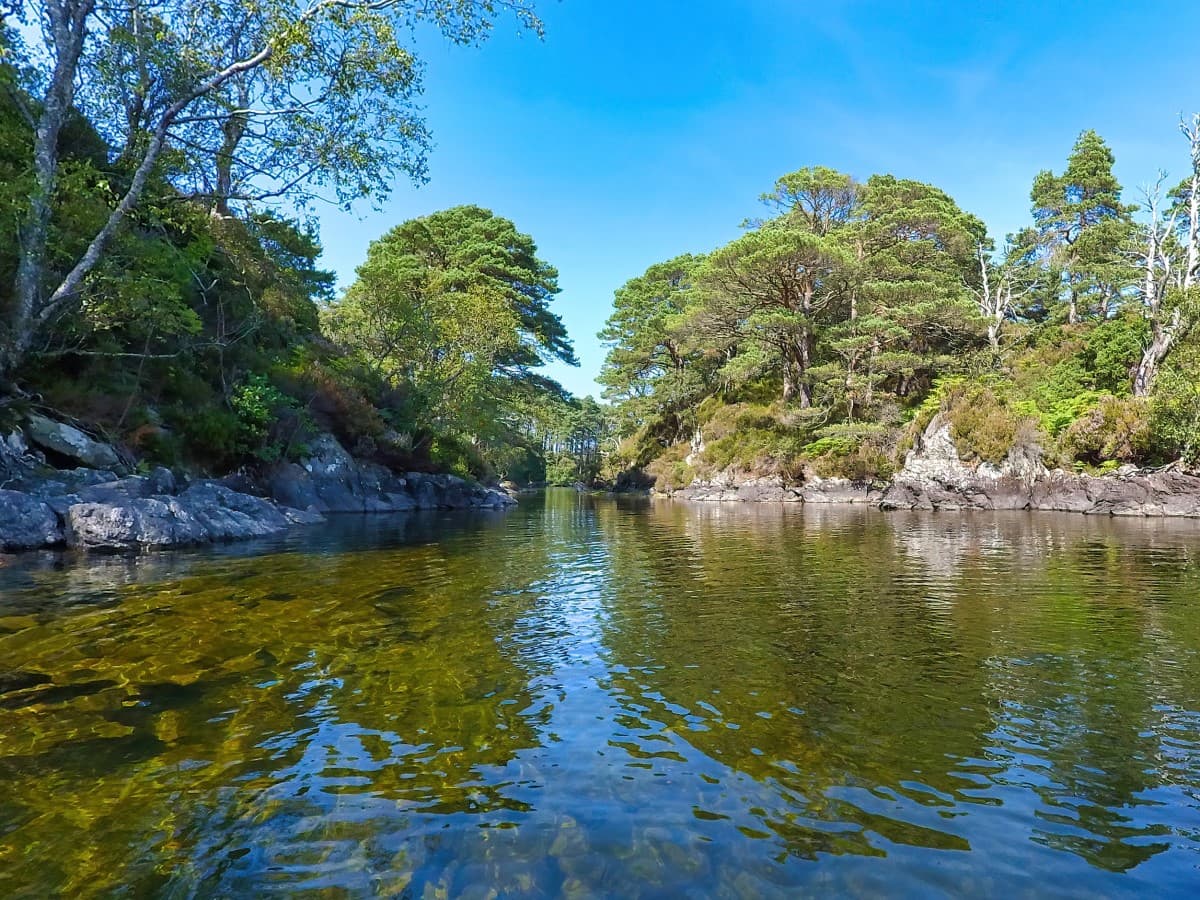
Heading back to the shoreline allows visitors to enjoy the open water and there are multiple opportunities for water sports, but perhaps the best option is to take a canoe out and paddle around the islands on the western end of the loch. These islands are heavily wooded and are dotted with golden sand beaches, so spending a day on Loch Morar means you could have your own wee island all to yourself!
Another activity the loch is famous for is fishing, and visiting anglers are spoilt for choice when it comes to catching wild salmon and trout. Loch Morar fishing is quite a unique experience as unlike many of Scotland’s largest bodies of water, it is completely unaffected by fish farming, so the resident trout and salmon are as wild as it gets. Coupled with the fact that there are umpteen superb spots to set up with a rod it’s a wonderful location for anglers.
Wildlife lovers, meanwhile, will be captivated by the many animal species that call Loch Morar their home and it’s not unusual to see golden and sea eagles during a visit as well as buzzards, hawks, harriers and kestrels.
Around the shore of Loch Morar, there are otters, pine martens, bats, badgers, and red deer, as well as (very) occasional sightings of endangered wildcats, so suffice it to say the area is a fantastic place to set up camp with a pair of binoculars (link to binocular reviews).
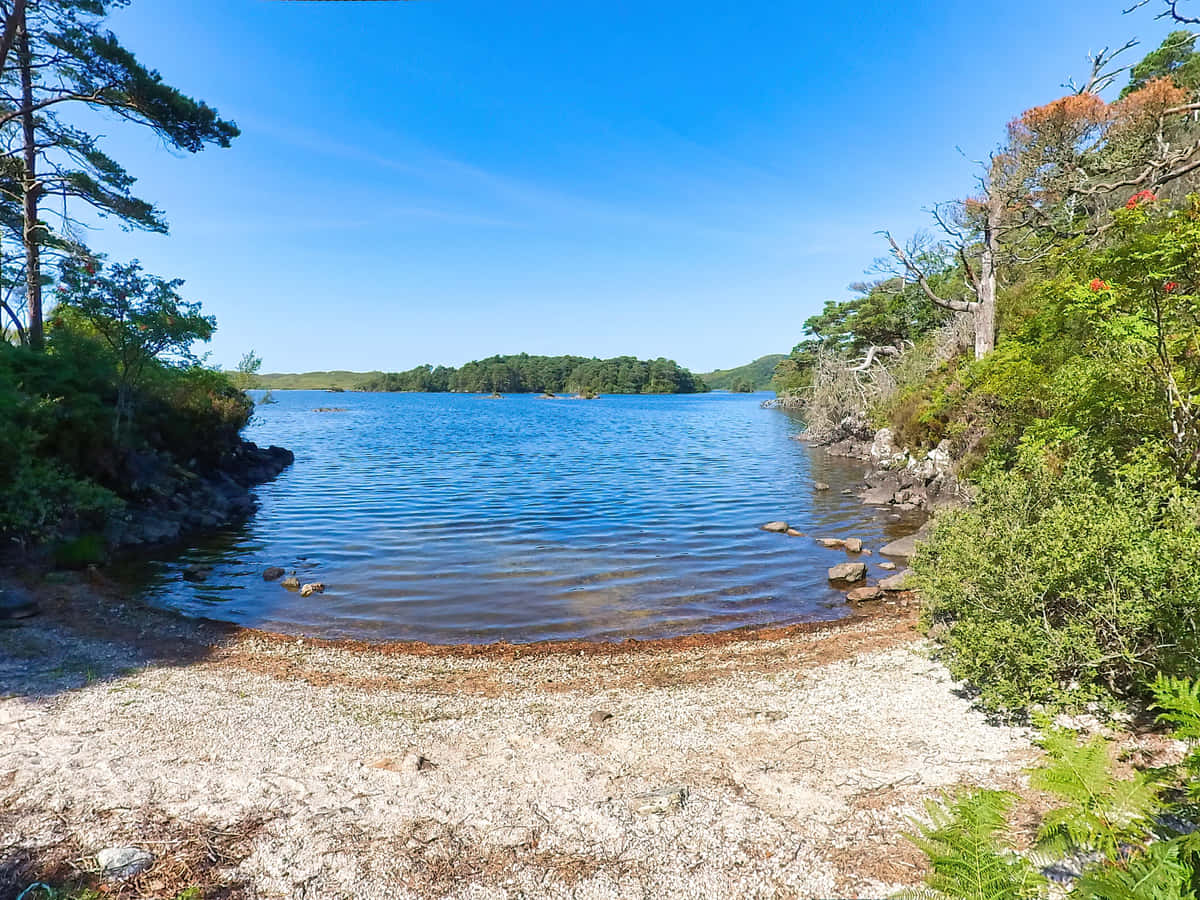
Book Tours in Scotland
The Highlights
1: I can’t begin to describe how scenic this loch is (well, on a sunny day at least). Loch Morar is one of those places in Scotland where it’s possible to feel like you’re a million miles from civilization, even though there’s a busy village just a couple of miles to the west.
2: An absolute must-do for any visitor to the area is the circular route from Loch Morar to Tarbet and then Mallaig. It’s an all-day journey that sees walkers hiking along the northern shore of Loch Morar from St. Cumin’s Kirk for 7 miles before heading inland to Tarbet for 3/4 mile, then hopping on a ferry around Loch Nevis to Mallaig, and finally catching a train back to Morar. See the Western Isles Cruises website for ferry times.
3: Aside from the scenery, the water sports, and the walking trails, Loch Morar is a fantastic place for wildlife watchers. The combination of low areas around the shoreline and the tall peaks of the surrounding hills means there are habitats that are suitable for a wide range of animals. Keep your eyes open for red deer, sea eagles, golden eagles, and otters.
Visiting Tips
1: Parking is very limited at Loch Morar so you’ll need to get there early (especially at the weekend) to find a space on the side of the single-track road between Morar and Bracara. The best parking spot I found is located 3/4 mile past St. Cumin’s Kirk. There’s space for around 10 cars, and there’s a jetty nearby for getting on the open water if you’re visiting with a canoe. This is the location on Google Maps Streetview.
2: The western end of Loch Morar is by far the most interesting area to paddle around due to the stunning Loch Morar islands located in the middle. Some of these islands have small bays where you can get out and have an entire beach to yourself. Please note that there are no bins on these islands, so you must take all your rubbish home with you (take only memories, leave only footprints, etc.).
3: If getting out onto the water doesn’t float your boat (pardon the pun), you might like to go for a walk along the side of the loch. The easiest-to-access footpath starts at the end of the road past Bracara (very limited parking) and continues to the middle of the loch on the northern side before heading inland to Tarbet, which faces Loch Nevis. Note that the footpath is quite rough and is not suitable for bikes.
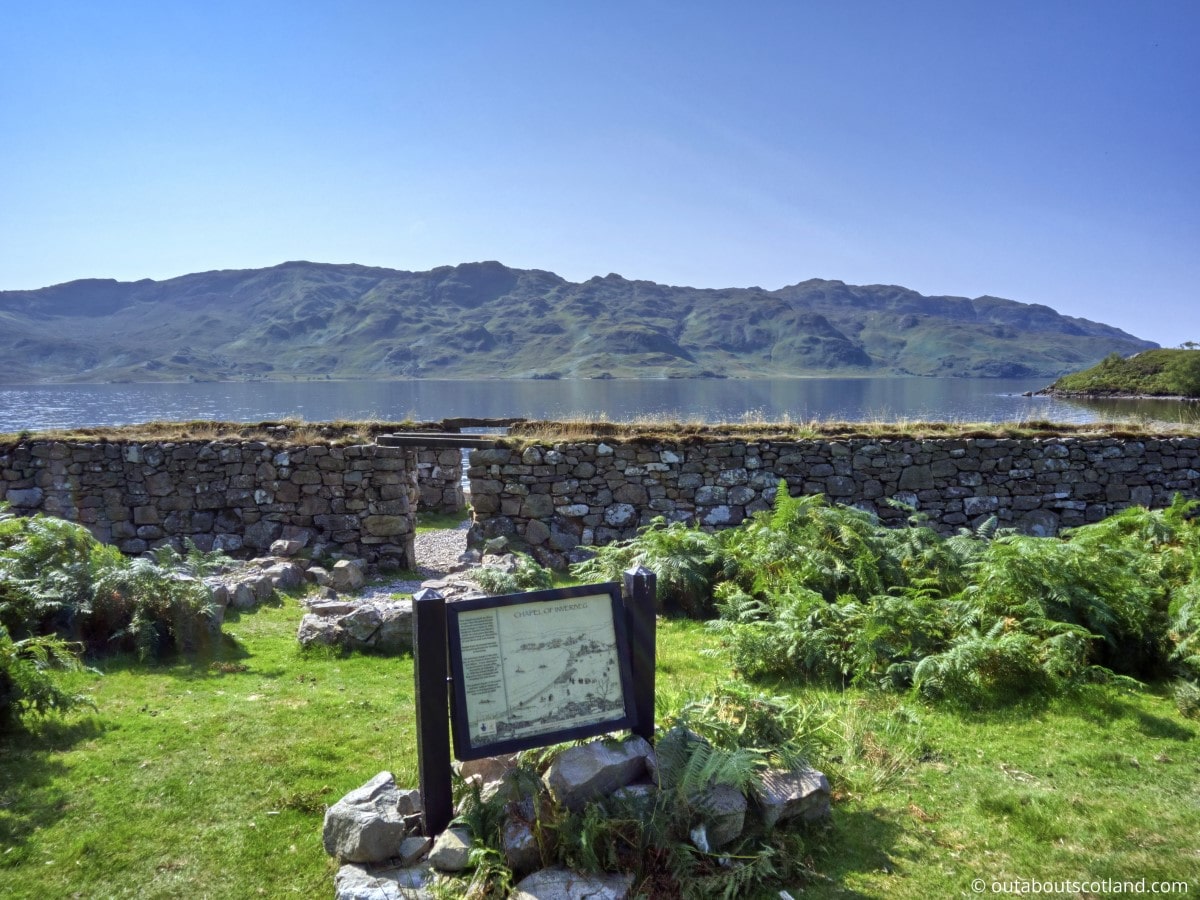
Protect Your Family From Scotland's Biting Midges
- Powerful, reliable protection for up to 8 hours
- Water- and sweat resistant
- Repels midges, mosquitoes, horse flies, sand flies, fleas and ticks
- Safe for use on adults, children over 30 months and pregnant women
- Non-sticky, moisturising with a pleasant fragrance
- Packaging may vary
Tourist Information
When I last visited Morar I was lucky enough to spend a full week there when it was sunny and warm every day, meaning there were ample opportunities for coastal walks and splashing about in a kayak. While much of the visit was spent around the Silver Sands of Morar and the gorgeous Camusdarach beach, I made sure I spent an equal amount of time at Loch Morar.
For accommodation, I booked an Airbnb in Morar village near The Morar Hotel so I could make use of its bar and restaurant which has fabulous balcony views across Morar Bay. There isn’t much else in Morar, but it does have a small train station, so train rides north to Mallaig and south to Arisaig are possible, though the trains are infrequent and are nowhere near as practical as using your own car.
As far as facilities go, the best options are found 3 miles north of Morar in Mallaig which has a small supermarket as well as several restaurants, pubs, and a wee petrol station – though be warned everything is just as expensive as you’ll find on most of the west coast islands.
Morar village, meanwhile, is in a perfect location to explore Loch Morar as you can drive to the westernmost point in a matter of minutes.
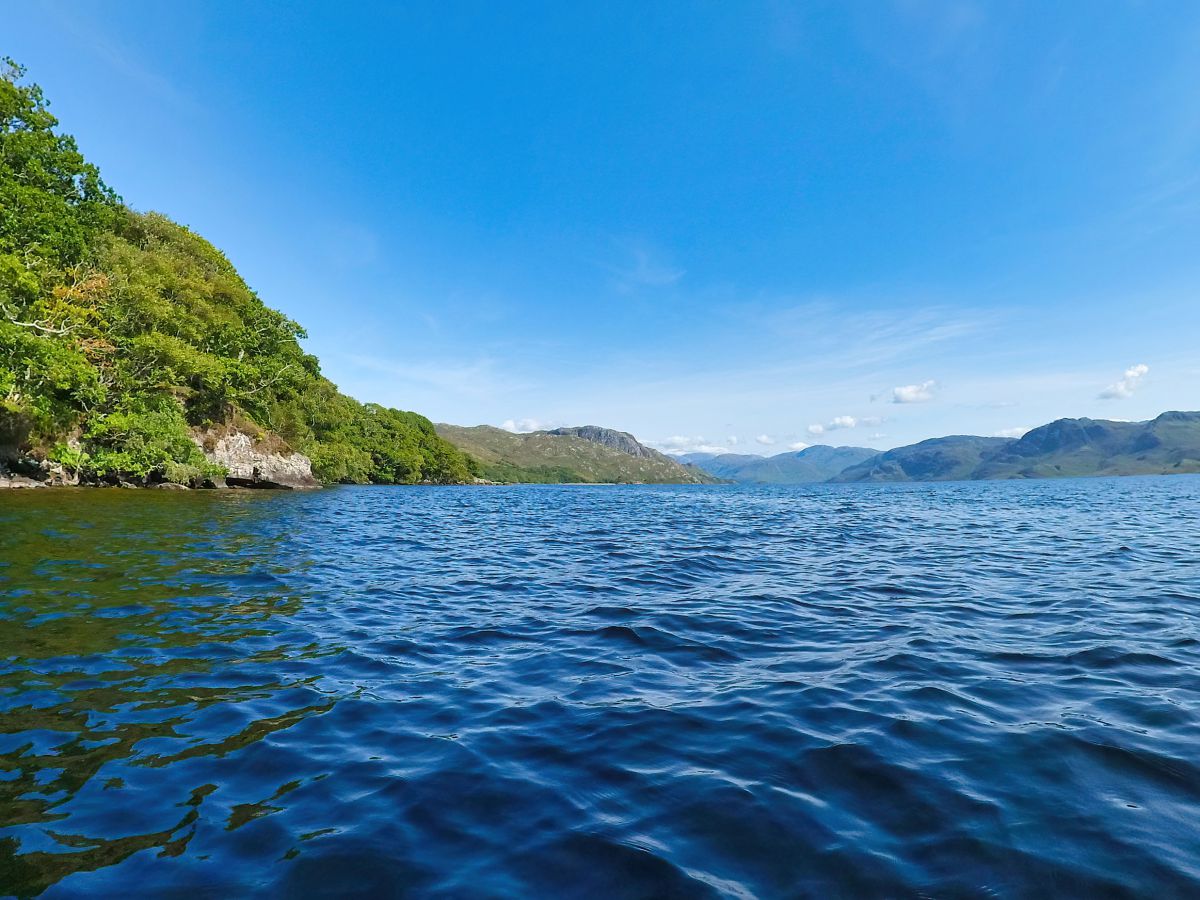
A single-track road winds its way around the northern shoreline for 3 miles to Bracarina, after which there’s a rough footpath that follows the shoreline to Tarbet (see the visiting tips section below). Parking is pretty much non-existent along this road, but there are a couple of spaces where you can pull over onto the grass verge. Be aware none of these spaces are suitable for camper vans and even large 4x4s might struggle to fit in.
Once parked, perhaps the best way to enjoy Loch Morar is to get out onto the open water. This is what I spent the majority of my time doing and I have to say it was one of my most memorable moments in Scotland to date.
A fantastic way to spend the day is splashing around the tiny islands and then having a picnic on a completely uninhabited beach, especially if you go during the week when there is less chance of running into other kayakers. Alternatively, the walking route from Bracarina to Tarbet is highly recommended, as there are further secluded beaches along the northern shore.
It’s possible to continue east but there’s no path and the terrain is quite rough, which is pretty much the exact same situation on the southern side of Loch Morar. Bear in mind that this loch is deceptively long, at 11 miles east to west, and there is absolutely nothing along the shoreline in either direction except for a tiny bothy on the eastern end of the loch.
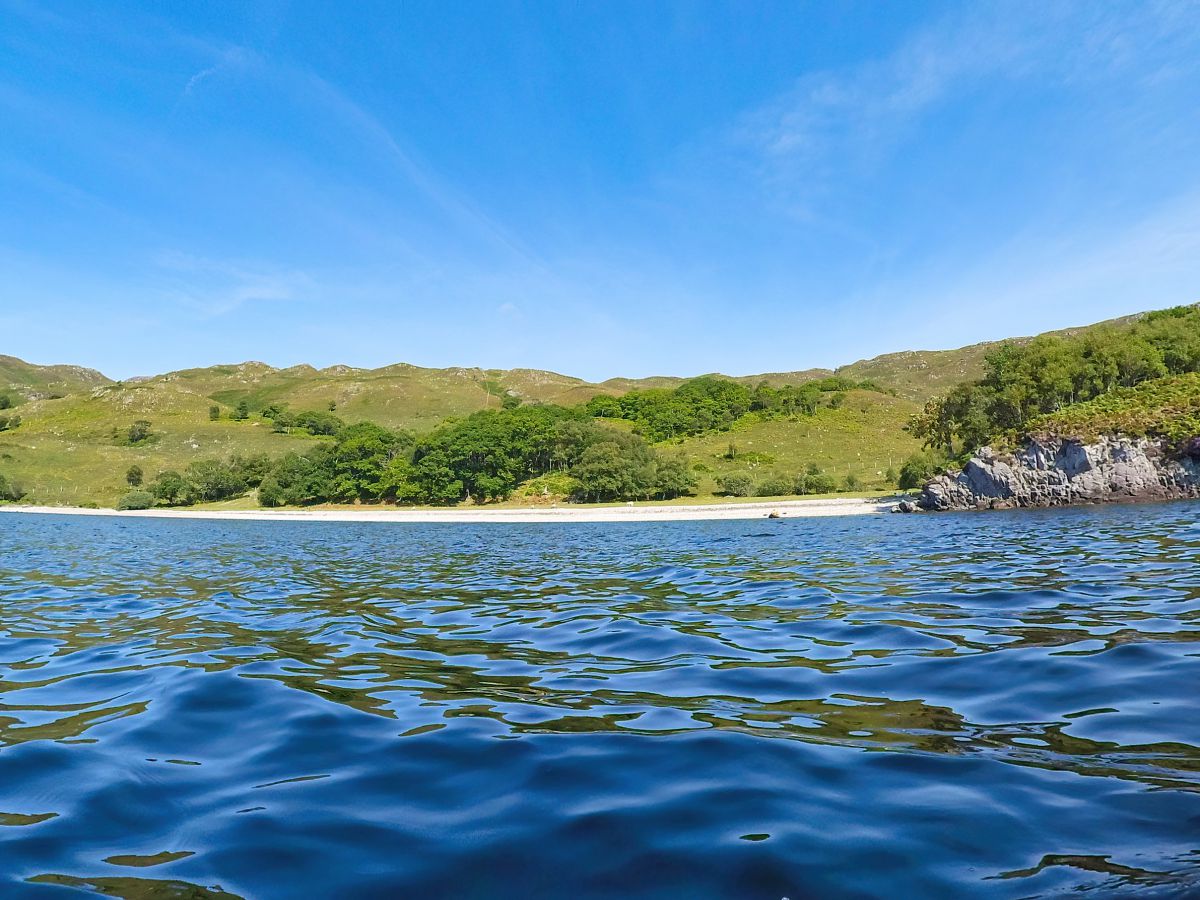
Things to Do
Boating: Loch Morar is the deepest freshwater body in Britain, making it a perfect spot for boating. Rent a kayak or a paddleboard and splash your way across the serene waters while enjoying the breathtaking scenery that surrounds you – just remember to keep an eye open for the loch’s very own monster, Morag!
Fishing: This loch is teeming with various species of fish, including salmon and trout. You can spend a peaceful day fishing on the banks or take a boat out into the deeper waters. Make sure to get your permit first though (see the Loch Morar website for details).
Hiking: The area around Loch Morar offers numerous hiking trails, ranging from easy to challenging. These trails will take you through lush forests and rolling hills with stunning views of the loch from start to finish. Remember to wear good walking boots (link to recommended walking boots) and carry plenty of water.
Wildlife Spotting: Loch Morar is home to a diverse range of wildlife. From deer and otters to golden eagles, you never know what you might spot during the day, though early morning or dusk are the best times for this activity.
Picnicking: There are several spots around the loch where you can relax and enjoy a picnic – just make sure you remember to pack Smidge spray if you’re thinking of sitting near the water.

Book Tours in Scotland
Things to Do Nearby
From Morar:
Silver Sands of Morar. Morar, PH40 4PB. 4-minute drive.
The Silver Sands of Morar are a series of celebrated golden sand beaches situated immediately west of the most westerly point of Loch Morar. The beaches include Camusdarach Beach which is famous for its views of the Small Isles, and Morar Bay which has shallow water that’s ideal for paddling.
Mallaig. Morar, PH40. 8-minute drive.
Mallaig is a small fishing village located three miles north of Morar. The village is the ferry departure point for sailings to the Small Isles and Skye, and it is also the last stop for the famous Jacobite Steam train.
Mallaig Heritage Centre. Station Rd, Mallaig, PH41 4PY. 8-minute drive.
The Mallaig Heritage Centre is located next to Mallaig train station. The centre houses a number of exhibits that depict Lochaber’s rich history including the region’s industrial and fishing heritage, its turbulent times of war, and how people farmed this incredibly remote part of the British Isles.
Larachmhor Garden. Arisaig, PH39 4NX. 10-minute drive.
A wild woodland garden that has been carefully tended for over 150 years. The garden houses more than 1,200 different plant species including nearly 200 different types of rhododendron. Parking is via a roadside layby located 50 metres beyond the entrance. Entry is free.
The Prince’s Cairn. 120 A830, Lochailort, PH38 4NA. 13-minute drive.
The Prince’s Cairn marks the point where Bonnie Prince Charlie left the Scottish mainland for good after his defeat at Culloden. There is a large layby on the left-hand side of the road that allows access to the cairn which is also a scenic viewpoint.
Frequently Asked Questions
What monster lives in Loch Morar?
There is no proven evidence that a monster lives in Loch Morar but there’s a local legend that Morag (named by locals in reference to the loch) lives there.
There have been 34 reported sightings of Morag to date. The majority of these sightings are from locals and are therefore suspected as being made up to boost tourism to the area.
Is Loch Morar deeper than Loch Ness?
Loch Morar is deeper than Loch Ness and is, in fact, the deepest freshwater loch in Scotland. The deepest point of Loch Morar is 310 metres. The deepest point of Loch Ness is 227 metres.
Loch Ness has a larger total volume at 7.5 cubic km vs Loch Morar’s 2.3 cubic km.
Why is Loch Morar so deep?
Along an east-west geological fault line, glacial erosion formed Loch Morar. The natural valley created by the fault line was further carved by ice flows at a rate of 4mm per year over an estimated 67,000 to 150,000 years, leading to Loch Morar’s final depth of 310 metres after the ice melted.
Can you drive around Loch Morar?
It is not possible to drive around Loch Morar. However, you can drive part way around the northwest corner by taking a turn-off from Columba Road/B8008 from Morar and following a single-track road 2.5 miles to Bracorina.
Protect Your Family From Scotland's Biting Midges
- Powerful, reliable protection for up to 8 hours
- Water- and sweat resistant
- Repels midges, mosquitoes, horse flies, sand flies, fleas and ticks
- Safe for use on adults, children over 30 months and pregnant women
- Non-sticky, moisturising with a pleasant fragrance
- Packaging may vary



